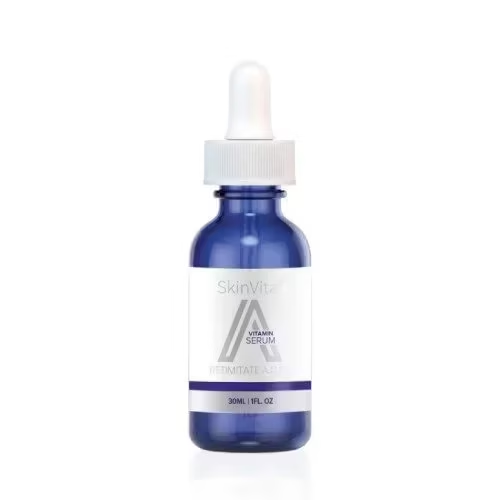
Introduction
Retinol and retinoids, the transformative powerhouses of skincare, are renowned for their remarkable ability to diminish wrinkles, refine skin texture, and combat various signs of ageing. However, their potency can sometimes lead to irritation if not handled with care. This comprehensive guide will provide expert advice on effectively incorporating these transformative ingredients into your skincare routine, minimising potential side effects. We’ll delve into the science behind their effectiveness, explore product options, and address the misconception that they should only be used at night.
Understanding Retinol and Retinoids
Definition and Differences
Retinol and retinoids are vitamin A derivatives that are crucial in skin rejuvenation. However, they differ in strength and formulation. Retinol is a milder, over-the-counter (OTC) option often recommended for beginners or those with sensitive skin. It gradually converts into retinoic acid, the active form that interacts with skin cells. On the other hand, retinoids are a more potent form of vitamin A and often require a prescription. They come in various forms, such as tretinoin, adapalene, and tazarotene, each offering distinct advantages in treating specific skin concerns.
Benefits for the Skin
Both retinol and retinoids offer a multitude of benefits for the skin, including:
- Wrinkle Reduction: Stimulate collagen production, plumping the skin and reducing the appearance of fine lines and wrinkles.
- Improved Skin Texture: Accelerate cell turnover, revealing smoother, more even-toned skin.
- Reduced Hyperpigmentation: Fade dark spots and discolouration caused by sun damage or acne scarring.
- Acne Treatment: Regulate oil production and unclog pores, preventing breakouts.
- Increased Skin Elasticity: Strengthen the skin’s supportive structures, promoting firmness and resilience.
Common Misconceptions
One common misconception is that retinol and retinoids should only be used at night. While they can increase sun sensitivity, this doesn’t mean they are exclusively for nighttime use. With proper sun protection, they can be incorporated into your morning routine as well.
How Retinol and Retinoids Work
Mechanism of Action
Retinol and retinoids bind to specific receptors within skin cells, influencing gene expression and cellular behaviour. This leads to increased collagen production, accelerated cell turnover, and reduced inflammation, resulting in the numerous skin benefits mentioned earlier.
Evidence-Based Benefits
A wealth of scientific evidence supports the efficacy of retinol and retinoids. Numerous clinical studies have demonstrated their effectiveness in reducing wrinkles, improving skin texture, and treating acne. For instance, a study published in the Journal of the American Academy of Dermatology found that topical tretinoin significantly reduced wrinkles and improved skin roughness compared to a placebo.
Choosing the Right Product
Types of Retinol and Retinoid Products
The market is flooded with retinol and retinoid products, so choosing one that suits your skin type and needs is essential. Options include serums, creams, gels, and even prescription-strength formulations. The concentration of retinol or retinoid varies across products, with higher concentrations generally offering more potent results but also increasing the risk of irritation.
Factors to Consider When Choosing a Product
Consider the following factors when selecting a retinol or retinoid product:
- Skin Type: If you have sensitive skin, opt for a lower concentration or a retinol product over a retinoid.
- Skin Concerns: Choose a product that targets your concerns, such as wrinkles, acne, or hyperpigmentation.
- Formulation: Consider your preference for serums, creams, or gels.
- Budget: Retinol and retinoid products can vary in price, so choose one that fits your budget.
Recommended Products Based on Skin Type
- Sensitive Skin: La Roche-Posay Redermic R or CeraVe Resurfacing Retinol Serum
- Normal to Dry Skin: SkinMedica Age Defense Retinol Complex or Neutrogena Rapid Wrinkle Repair
- Oily Skin: The Ordinary Retinol 0.5% in Squalane or Differin Adapalene Gel 0.1%
Preparing Your Skin
Importance of a Skincare Routine
A consistent skincare routine is essential for maximising the benefits of retinol and retinoids while minimising potential irritation. A good routine involves cleansing, exfoliating, moisturising, and protecting your skin from the sun.
Steps to Prepare Your Skin for Retinol/Retinoids
- Cleanse: Start with a cleanser to remove makeup, dirt, and excess oil.
- Exfoliate (Optional): Exfoliate once or twice a week to remove dead skin cells and enhance product absorption. Use a mild exfoliant, such as a chemical exfoliant with glycolic or lactic acid.
- Tone: Apply a hydrating toner to balance your skin’s pH and prepare it for subsequent products.
- Wait: Allow your skin to dry completely before applying retinol or retinoids. This can take about 20-30 minutes.
Cleansing and Exfoliation Tips
To avoid irritation, choose a non-comedogenic (won’t clog pores) and fragrance-free cleanser. If you exfoliate, do so gently and avoid using harsh scrubs that can damage your skin.
Starting Slowly
Importance of Gradual Introduction
Introducing retinol or retinoids gradually is crucial to avoid overwhelming your skin. Start by applying a small amount once or twice a week and gradually increase the frequency as your skin adjusts.
How to Incorporate Retinol/Retinoids into Your Routine
Begin by applying a pea-sized amount to your entire face after cleansing and toning at night. If you’re using a retinol serum, apply it before your moisturiser. If you’re using a retinol cream, you can apply it after your moisturiser.
Frequency of Application for Beginners
For beginners, it’s recommended to start with twice-weekly applications and gradually increase to every other night or every night, depending on your skin’s tolerance. It may take several weeks to months for your skin to fully adjust to retinol or retinoids.
Application Tips
Proper Application Techniques
Apply a pea-sized amount of product to your fingertips and gently dot it onto your forehead, cheeks, nose, and chin. Then, smooth it over your entire face, avoiding the eye area and lips.
Amount to Use
A pea-sized amount is usually sufficient for the entire face. Using too much retinol can increase the risk of irritation.
Areas to Avoid
Retinol and retinoids should not be applied to the eyelids, lips, or the corners of the mouth, as these areas are more sensitive and prone to irritation.
Nighttime Routine
Why Retinol/Retinoids are Often Used at Night
While retinol and retinoids can be used in the morning with adequate sun protection, they are typically recommended for nighttime use for several reasons:
- Increased Sensitivity to Sunlight: Retinol and retinoids can make your skin more sensitive to the sun’s UV rays, increasing the risk of sunburn and irritation.
- Enhanced Absorption: Skin cell renewal and repair processes are more active at night, potentially improving the absorption and effectiveness of retinol and retinoids.
- Reduced Interaction with Other Products: Nighttime application minimises the interaction of retinol and retinoids with other skincare products, reducing the risk of irritation or decreased efficacy.
Ideal Nighttime Skincare Routine
- Cleanse: Clean your face to remove makeup, dirt, and excess oil.
- Tone: Apply a hydrating toner to balance your skin’s pH.
- Retinol/Retinoid: Apply a pea-sized amount of retinol or retinoid to your entire face, avoiding the eye area and lips.
- Moisturise: Follow up with a moisturiser to hydrate and soothe your skin.
Tips for Enhancing Results While You Sleep
- Use a Humidifier: A humidifier can prevent dryness and flakiness caused by retinol or retinoids.
- Use a Silk Pillowcase: Silk pillowcases are gentler and can help reduce friction on the skin, minimising the risk of irritation.
- Get Adequate Sleep: Sleep is essential for skin repair and regeneration.
Managing Side Effects
Common Side Effects and How to Mitigate Them
Common side effects of retinol and retinoids include:
- Dryness: Hydrate your skin using a moisturiser with hyaluronic acid or ceramides.
- Redness: Reduce the frequency of application or switch to a lower concentration.
- Peeling: Avoid picking at peeling skin, which can lead to further irritation.
When to Seek Professional Advice
If you experience severe irritation, such as burning, itching, or blistering, discontinue use and talk with us.
Balancing Retinol/Retinoid Use with Other Skincare Products
Avoid using retinol or retinoids with other potentially irritating ingredients, such as benzoyl peroxide or alpha hydroxy acids (AHAs).
Hydration and Moisturisation
Importance of Hydration
Hydration is crucial when using retinol and retinoids, as they can cause dryness and flakiness.
Best Moisturisers to Pair with Retinol/Retinoids
Look for moisturisers that contain humectants, e.g. hyaluronic acid to attract moisture to the skin, emollients like ceramides or shea butter to soften and soothe the skin
FAQs
What is the difference between retinol and retinoid skin care?
Retinol is a milder, over-the-counter form of vitamin A, while retinoids are more potent, often prescription-based formulations. Both promote cell turnover and collagen production but vary in potency.
How long does it take to see results from retinol/retinoids?
Most people start to see skin texture and tone improvements within 4 to 12 weeks of consistent use.
Can I use retinol/retinoids every night?
It’s best to start with a few times a week and gradually increase frequency as your skin builds tolerance. Daily use may be possible for some, but it depends on skin sensitivity.
What should I do if I experience severe irritation?
Reduce the frequency of application or use a lower concentration. Use a gentle cleanser and a good moisturiser. If severe irritation persists, consult a dermatologist.
Are retinol/retinoids safe for all skin types?
While generally safe, retinol and retinoids can irritate, especially for those with sensitive skin. Choosing the right product and following a gradual introduction is essential to minimise adverse effects.
Frequently Asked Questions
What is the difference between retinol and retinoids?
Retinol is a milder, over-the-counter form of vitamin A, while retinoids are more potent, often prescription-based formulations. Both promote cell turnover and collagen production but vary in potency.
How long does it take to see results from retinol/retinoids?
Results can vary, but most people start seeing improvements in skin texture and tone within 4 to 12 weeks of consistent use.
Can I use retinol/retinoids every night?
It’s best to start with a few times a week and gradually increase frequency as your skin builds tolerance. Daily use may be possible for some, but it depends on skin sensitivity.
What should I do if I experience severe irritation?
Reduce the frequency of application or switch to a lower concentration. Use a gentle cleanser and a good moisturiser. If severe irritation persists, consult a dermatologist.
Are retinol/retinoids safe for all skin types?
While generally safe, retinol and retinoids can irritate, especially for those with sensitive skin. It’s important to choose the right product and follow a gradual introduction to minimise adverse effects.







